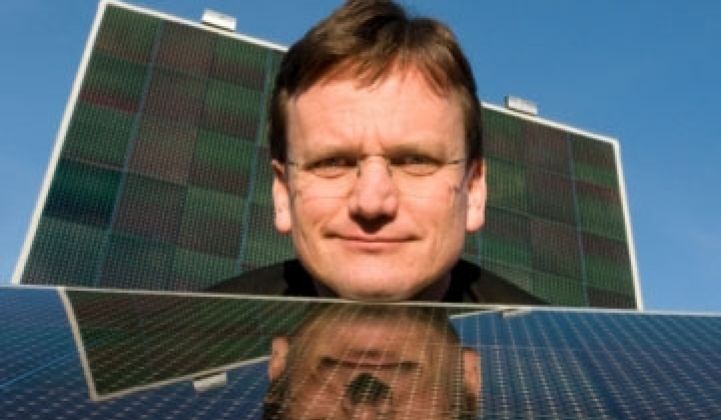The biggest day in CIGS history, at least since the coming-out party Solyndra held last year, is coming.
Nanosolar, the well-funded and sometimes controversial maker of copper indium gallium selenide (CIGS) solar cell has blanked out its website. Instead of blogs by CEO Martin Roscheisen and several announcements, the website only contains this terse message:
"Please check back here on Sept. 9th for our new website with significant new announcements."
We do not know what the significant new announcement is, but sources speculate that Nanosolar will finally provide concrete details on the commercial production of its CIGS panels. The company, potentially, could also discuss panel efficiency or certification.
Silence like this is highly un-characteristic of Nanosolar, which until a few months ago was one of the more outspoken and flamboyant companies in CIGS. The company has raised over $500 million to make CIGS panels through a printing process. Investors include Mohr Davidow, but also Google's Sergey Brin and Larry Page. The funds were largely raised to fine-tune the manufacturing process and build out a 430 megawatt manufacturing facility in San Jose, Calif.
Nanosolar said it began producing CIGS panels in Dec. 2007. But good luck finding them. Analysts have since then speculated about the volume and efficiency of any of Nanosolar's output. It's a favorite topic for many. Most CIGS startups use very different manufacturing processes and the big question for the industry has been which process – electroplating, printing, evaporation, etc. – actually works best.
Between Nanosolar's announcement and now, much has happened. Global Solar and Solyndra, two other CIGS companies, started shipping CIGS panels. The credit crunch began to impact the ability of startups, solar installers and potential customers to get credit or funds to proceed with plans to go solar. Declining prices for crystalline panels have also made it more difficult for new thin film panel companies like Nanosolar to compete. At the same time, new start-ups have entered the CIGS space with far less capital than the early entrants, who all consumed tens of millions of dollars to get to the stage where they could make prototypes. NuvoSun, started by former Miasole CEO Dave Pearce, bought factory equipment off of Ebay and managed to produce a "champion" cell at 11.8 percent efficiency, close to what some of the early companies have accomplished with more money and time.
On the plus side, other CIGS competitors like SoloPower, Miasole and HelioVolt have had to undergo delays and/or management changes. Elections in the U.S., Japan and elsewhere have also made it easier for venture-funded companies to get government grants.
In February, Nanosolar began building a 1-megawatt facility in Germany and has talked up plans to expand to over 600 megawatts there.
Photo of CEO Martin Roscheisen via the company.



